Table of contents
The sesame butter known as tahini or tahini consists of sesame seeds processed into a kind of paste. In addition to the commercially available roasting process, tahini is also available raw, for which the sesame seeds are soaked in water or ground directly. Make sure it is organic quality.
Use in the kitchen
What is tahini? Tahini is a paste made from ground sesame seeds. Sesame paste is used a lot in Arabic cuisine and is an important ingredient for hummus (chickpea puree) and baba ganoush (eggplant dip). Tahini paste is also often used in Asia (China and Japan) for various pasta dishes. It is sometimes made from unpeeled black sesame seeds, which makes the paste appear darker. Commercial tahini usually consists of a mix of roasted, peeled and unpeeled sesame seeds.
What does tahini taste like? Tahini tastes nutty, hearty and a little bitter. It is used for both cold and warm dishes. Mixed with garlic, parsley, coriander, lemon juice and a plant-based yoghurt (e.g. made from soy), it can be made into a delicious tahini sauce. With a little lemon juice and salt, the sesame paste can be spread over falafel or used for a healthy orange cauliflower in tahini sauce. It is also suitable together with apple cider vinegar as a salad dressing, e.g. in a kale salad with fennel, oranges and walnuts. It is used as an alternative thickener to flour for various soups or as part of a balanced breakfast in its raw form as a spread on wholemeal bread. Tahini is also an ingredient in the Middle Eastern sweet speciality "Halva".
Homemade preparation
Can you make tahini yourself? You can make tahini yourself in just a few steps. For one jar, roast 300 g of sesame seeds (white or black) in a frying pan without oil until golden brown. Allow to cool briefly and puree with 80 g of sesame oil in a blender or with a hand blender to form a fine, creamy mixture. Then fill this into an airtight screw-top jar and pour 2 tablespoons of sesame oil over it before closing.
Vegan recipe for lentil soup with tahini
Ingredients (for 4 people): 4 carrots, 2 onions, 2 tbsp rapeseed oil (refined), 1 tsp turmeric, 240 g red lentils, 400 g tomatoes (chopped, peeled), 1.6 l vegetable stock, 200 g kale, 4 tbsp tahini (organic), 8 tbsp lemon juice,pepper (to taste).
Preparation: Cut the carrots into half moons and finely chop the onion. Heat the rapeseed oil and sauté the onion until translucent. Briefly sauté the carrots, turmeric and lentils and pour over the tomatoes and stock. Bring to the boil, reduce the heat and simmer for approx. 15 minutes. Wash the kale, prepare it, cut the leaves into strips and add to the soup 5 minutes before the end of the cooking time. Season with pepper. Mix the tahini with lemon juice to make a creamy sauce. Add a little water if necessary. Finally, pour the sauce over the vegan lentil soup.
Vegan recipe for tahini pasta
Ingredients (for 2 people): 125 g rice noodles, 120 g tahini (organic), 10 ml soy sauce, 2 tbsp sesame oil, 2 tbsp agave syrup, 1 tbsp sambal oelek, 1 tbsp fresh ginger (finely chopped), 2 cloves of garlic (finely chopped), ½ lime (squeezed), 100 ml water (or more), roasted sesame seeds.
Preparation: Prepare rice noodles according to the instructions on the packet. Puree the other ingredients to make a creamy sauce (add more water as needed). Mix the sauce with the noodles and serve with toasted sesame seeds; the vegan tahini pasta is ready.
Serve with falafel or vegetables of your choice.
Vegan recipes with tahini can be found under the note: " Recipes that have the most of this ingredient ".
| Not only vegans or vegetarians should read this: Vegans often eat unhealthily. Avoidable nutritional errors. |
Purchasing - Storage
Where can you find tahini in the supermarket? Tahini is available in most well-stocked supermarkets such as Coop, Migros, Aldi, Rewe, Edeka, Billa, Denner, Volg, Spar, Lidl, Hofer, and in organic supermarkets such as Alnatura or Denn's Biomarkt, even in organic quality. The sesame paste can also be purchased online, where it is occasionally also available in raw food quality. Turkish and Arab shops also sell sesame butter.
The availability of tahini varies depending on the size of the store, catchment area, etc. You can find our recorded food prices for the DA-CH countries above under the ingredient image - and by clicking you can see their development at different suppliers.
Storage tips:
Once opened, tahini can be stored for about three months at room temperature and about six months in the refrigerator. Homemade sesame butter can be kept in an airtight screw-top jar in the refrigerator for about two months.
Ingredients - Nutritional values - Calories
With 592 kcal per 100 g, sesame butter is extremely high in calories. This is mainly due to the high fat content of 53 g/100g, followed by carbohydrates (22 g/100g) and a good portion of protein (17 g/100g). Although tahini contains mainly unsaturated fats, the paste has a poor omega-6/omega-3 ratio and contains high amounts of inflammatory omega-6 fatty acids. How much omega 3 does tahini contain? The sesame butter contains 0.40 g/100g of the anti-inflammatory omega-3 fatty acids. The tahini omega-3 content is negligible compared to the tahini omega-6 content of 21 g/100. 1
Tahini contains 1.6 mg/100g of vitamin B1 (145% of the daily requirement). The water-soluble vitamin is found primarily in whole grains, nuts and legumes and performs numerous tasks in energy metabolism and the nervous system. Similar levels can be found in linseed (1.6 mg/100g). Yeast flakes are also a good source (41 mg/100g), with one tablespoon containing around 1.2 mg/100g of the vitamin. Peanut butter only contains 0.11 mg/100g. 1
Tahini contains 34 µg/100g of selenium (63% of the daily requirement). Mustard contains the same amount of selenium per 100g. Due to its high reactivity with oxygen, this essential trace element plays an important role in protecting cell membranes from oxidative damage. Brazil nuts contain high amounts of selenium (1917 µg/100g), with 1-3 Brazil nuts covering the daily requirement. 1
Sesame butter also contains 98 µg/100g folate (49% of the daily requirement). 100 g of walnuts (tree nuts) contain the same amount of this vitamin, but they are often consumed in smaller quantities. Folate is the precursor of folic acid, which is particularly important for cell renewal. Good plant sources are pulses, brassicas, green leafy vegetables and grain products. With 109 µg/100g , beetroot is a particularly recommended source of folate. 1
The tahini iron content and the tahini calcium values are rather low.
You can find all the ingredients of tahini, the coverage of the daily requirement and comparison values with other ingredients in our nutrient tables. In the article Nutrients explained you will get a detailed insight into the topic.
Health effects
Sesame seeds and sesame oil have antioxidant, antihypertensive, hypolipidemic (lipid-lowering) and appetite-suppressant properties. 2 You can read detailed information about the health effects directly in the linked ingredients.
Is tahini healthy? Basically, there is very little research into the health effects of tahini. However, tahini is rich in phytosterols, flavonoids and fiber and is a good source of the antioxidant lignans (secondary plant substances) sesamin and sesamol, both of which help lower cholesterol levels. As part of a healthy diet, tahini therefore has the potential to fulfill a cardio-protective function. 5
This potential is supported by a study published in 2021 involving 20 healthy men with an average age of 28 years who showed a significant decrease in diastolic blood pressure and pulse rate four hours after consuming tahini. 2 In patients with type 2 diabetes, adding two tablespoons (~28 g) of tahini to a breakfast meal over a period of six weeks resulted in a slight but non-significant reduction in blood sugar and insulin levels compared to a group with a usual diet. 3 In a similar setting, daily consumption of two tablespoons (~28 g) of tahini over six weeks showed no improvement in total cholesterol and LDL cholesterol. In contrast, triglycerides in this group decreased significantly compared to the control group. Elevated triglycerides are associated with an increased risk of cardiovascular diseases such as heart attack and stroke. HDL cholesterol in the tahini group increased slightly compared to the control group. 4
Individual studies do not yet allow any well-founded statements to be made about the effects on human health. Therefore, further research into tahini is required in the future.
Can you lose weight with tahini? There are currently no studies examining whether taking tahini has a direct impact on weight changes.
Dangers - Intolerances - Side Effects
People who are allergic to sesame should also be careful when consuming tahini.
Industrially produced sesame butter is repeatedly affected by salmonella. For many tahini producers, roasting is the only countermeasure in the production process to prevent contamination. However, the lack of standardized roasting processes and stricter controls make complete success difficult. In view of the high potential for contamination after roasting, process testing and environmental monitoring of the production facility are also important. Internationally agreed standards and procedures could contribute to the safe production and consumption of this foodstuff that is used worldwide. 6 Until then, manufacturers should be alert to recalls.
The unfavorable ratio of omega-6 fatty acids (LA) to omega-3 fatty acids (ALA) of 53:1 speaks against excessive consumption of tahini. A maximum ratio of 5:1 (LA:ALA) is still desirable. Instead of a ratio, the Federal Nutrition Commission ( EEK) now recommends absolute intake amounts. For example, you should consume polyunsaturated fatty acids in quantities of 2.5-9% (omega-6 fatty acids) or 0.5-2% (omega-3 fatty acids) of your daily energy requirement. This corresponds to a maximum of 20 g per 2000 kcal (omega-6 fatty acids) or 1-4.4 g per 2000 kcal (omega-3 fatty acids). 7 The human body must absorb both fatty acids through food. However, the Western diet is characterized by a high proportion of omega-6 and a low proportion of omega-3 fatty acids. 8 Excessive amounts of polyunsaturated omega-6 fatty acids and a very high omega-6/omega-3 ratio promote the development of numerous diseases, including cardiovascular diseases, cancer, and inflammatory and autoimmune diseases. However, the intake of omega-3 fatty acids can counteract these developments. 9 Despite all this, tahini provides valuable nutrients and, if consumed in moderation, the higher proportion of omega-6 fatty acids is not a problem.
Vegans and vegetarians - largely because of the popular cashews, peanuts, hazelnuts, almonds, sunflower seeds and vegetable oils - show a significantly worse ratio than the 10:1 of "normal eaters", which is already far too high. 10
We can only warn: vegans and vegetarians who are misinformed or uninformed generally live worse than normal eaters - and a study is sure to come out that will ruthlessly expose this (see link in the box above). This could stop the vegan hype that is so important for animal welfare and the environment and discredit the oriented minority. This has been our fear since 2014! See this link to see what happened with raw food: The Giessen Raw Food Study.
Ecological footprint - animal welfare
A life cycle analysis ("cradle to gate", or: from raw material extraction to the factory gate) calculated the CO 2 footprint of traditionally produced organic tahini in Iran. The researchers arrived at 12.4 kg CO 2 eq/kg. 14 Another analysis of tahini produced from Indian sesame (2.03 kg CO 2 eq/kg) in the USA arrived at a CO 2 footprint of 5.34 kg CO 2 eq/kg. 15 The Danish climate database Concito shows a similar greenhouse gas potential: 5.54 kg CO 2 eq/kg tahini. 16 The CO 2 footprint of tahini is therefore similar to that of the cheese made from cow's milk available in Germany: 5.7 kg CO 2 eq/kg. 19
The carbon footprint of a food product depends on many factors. The type of agricultural production (conventional vs. organic), seasonal, regional, domestic production or import by truck, ship or plane and different types of packaging all play a decisive role.
The global average water footprint of sesame is 9371 l/kg. That is a large footprint, comparable to that of animal products. Of course, you only eat a few grams of sesame. Nevertheless: if you assume that tahini is made of 100% sesame, a tablespoon of it (approx. 10 g) would still have a water footprint of 94 liters. Tahini is therefore a product that is in the upper middle range in terms of water consumption. But for comparison: almond butter needs a lot more, as peeled almonds use 16,095 l/kg. Sunflower seeds only use 3366 l/kg 17 and can also be easily processed into a vegan "butter".
For detailed explanations of various sustainability indicators (such as ecological footprint, CO2 footprint, water footprint), see our article: What does the ecological footprint mean?
When buying tahini, look for fair trade and organic certifications.
Animal welfare - species protection
The sesame flower is generally seen as a self-pollinating plant, but its structure and attractiveness also show that it tries to attract cross-pollination. 22 As part of a research project at the University of Rostock, a biologist in West Africa was able to show that wild and honey bees are important for a high yield and the quality of sesame. Through pollination, farmers can increase their yields by up to 60%. 20 It can be assumed that sesame has good nectar and pollen values and is a good bee pasture. Just as pollinators benefit sesame, a variety of pollinators can also use sesame as a source of food. Up to 37 different species have been observed visiting sesame flowers. 21
Worldwide occurrence - cultivation
For information on the cultivation and harvesting of sesame seeds, please refer directly to the content on various unpeeled sesame varieties and black sesame. As Arabic cuisine becomes more popular in Western countries such as the USA, Germany and the United Kingdom, the global market for tahini is also growing. The Middle East, with countries such as Israel, Saudi Arabia, Jordan, Lebanon and Oman, are still the biggest sales drivers, with North America forecast to be the fastest growing region by 2025. 11
Industrial production
To produce tahini industrially, the sesame seeds are washed and dried first. The seeds are then usually roasted at around 100 to 150 °C. Instead of roasting, the seeds are sometimes placed in water or ground directly. This means that tahini can also be enjoyed raw. In a third step, all types of impurities and any bad sesame seeds are removed and the seeds are then ground to make the actual tahini paste. The homogeneous mass is then mixed and excess air is removed ("degassing"), before being cooled to below 45 °C. Finally, the finished sesame butter is filled into suitable containers, packaged and released for distribution. 12
Further information
What does tahin mean in English? The term "Tahin" comes from the Turkish/Arabic speaking area and means "sesame paste". 13
Alternative names
In German-speaking countries, sesame paste (sesame puree or sesame butter) is also occasionally called "tahina". In English it is called "tahini" or "tahina". In Iran the paste is called "ardeh" in Persian.
Bibliography - 21 Sources (Link to the evidence)
| 1. | USDA United States Department of Agriculture. |
| 2. | Sakketou EKI, Baxevanis GK, Tentolouris NK, Konstantonis GD, Karathanos VT, Fragkiadakis GA, u. a. Tahini consumption affects blood pressure and endothelial function in healthy males. J Hum Hypertens. 2022;36(12):1128–1132. |
| 3. | Bahadoran Z, Mirmiran P, Hosseinpour-Niazi S, Azizi F. A sesame seeds-based breakfast could attenuate sub-clinical inflammation in type 2 diabetic patients: a randomized controlled trial. International Journal of Nutrition and Food Sciences. 2015;4(2):1-5. |
| 4. | Mirmiran P, Bahadoran Z, Golzarand M, Rajab A, Azizi F. Ardeh (Sesamum indicum) could improve serum triglycerides and atherogenic lipid parameters in type 2 diabetic patients: A randomized clinical trial. Archive Iranian Medicine. 2013, 16, 651–656. |
| 5. | Reister EJ, Belote LN, Leidy HJ. The benefits of including hummus and hummus ingredients into the american diet to promote diet quality and health: a comprehensive review. Nutrients. 2020;12(12):3678. |
| 6. | Coulombe G, Tamber S. Salmonella enterica outbreaks linked to the consumption of tahini and tahini-based products. Microorganisms. 2022;10(11):2299. |
| 7. | EEK Bericht: Fette in der Ernährung, 2012 (pdf). |
| 8. | Simopoulos AP. Omega-6/Omega-3 Essential Fatty Acids: Biological Effects. In: Simopoulos AP, Bazan NG, Hrsg. Omega-3 Fatty Acids, the Brain and Retina. World Review of Nutrition Dietetics (Vol. 99). Basel: Karger; 2009: 1-16. |
| 9. | Simopoulos AP. The importance of the ratio of omega-6/omega-3 essential fatty acids. Biomedicine & Pharmacotherapy. 2002;56(8):365–379. |
| 10. | Davis BC, Kris-Etherton PM. Achieving optimal essential fatty acid status in vegetarians: current knowledge and practical implications. The American Journal of Clinical Nutrition. 2003;78(3):640-646. |
| 11. | Grand View Research com: Tahini Market Size, Share & Trends Analysis Report By Product (Sauces & Dips, Halva & Other Sweets, Pastes & Spreads), By Distribution Channel (Offline, Online), By Region, And Segment Forecasts, 2019 - 2025. |
| 12. | Nutmachines com: Tahini Production Process in Factory. 2019. |
| 13. | Langenscheidt com: Türkisch-Deutsch Übersetzung für "tahin". |
| 14. | Fereidani BM, Görkem Üçtuğ F. Towards sustainable production of sesame products: Comparison of traditional and modern production systems via a life cycle assessment approach. Cleaner and Responsible Consumption. März 2024;12:100166. |
| 15. | Carboncloud.Schweden. |
| 16. | CONCITO. The big climate database Version 1.1. Denmark’s green think tank, in collaboration with 2.-0 LCA consultants. Tahin, sesame paste. 2024. |
| 17. | Mekonnen MM, Hoekstra AY. The green, blue and grey water footprint of crops and derived crop products. Hydrol Earth Syst Sci. 25. Mai 2011;15(5):1577–1600. |
| 19. | Reinhardt G, Gärtner S, Wagner T. Ökologische Fussabdrücke von Lebensmitteln und Gerichten in Deutschland. Institut für Energie - und Umweltforschung Heidelberg. 2020. |
| 20. | Stein K, Coulibaly D et al. Bee pollination increases yield quantity and quality of cash crops in Burkina Faso, West Africa. Scientific Reports. 2017;17691. |
| 21. | Selvakumari G et al. Diversity of insect pollinators on sesame. ije. 2023; 85(2): 441-444. |
| 22. | Abrol DP. Pollination biology of cultivated oil seeds and pulse crops. CRC Press; 2024. 470 S. |

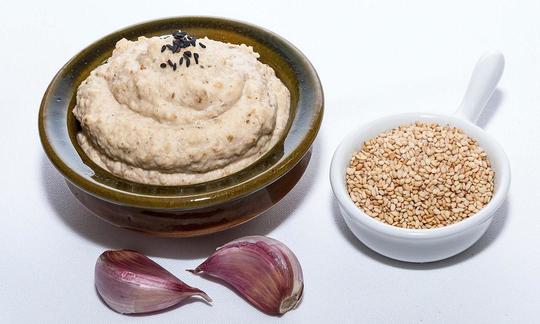

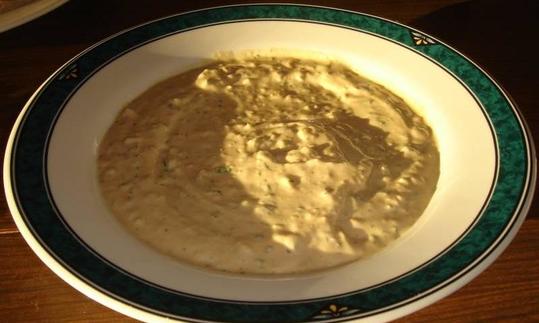

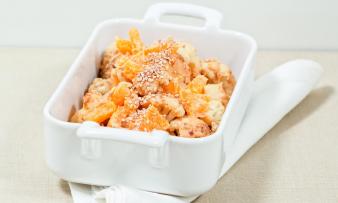

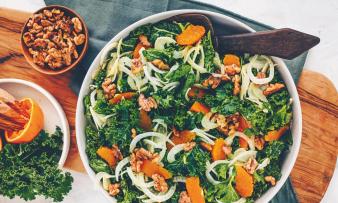


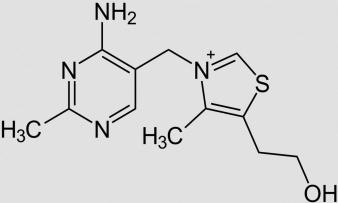


Comments